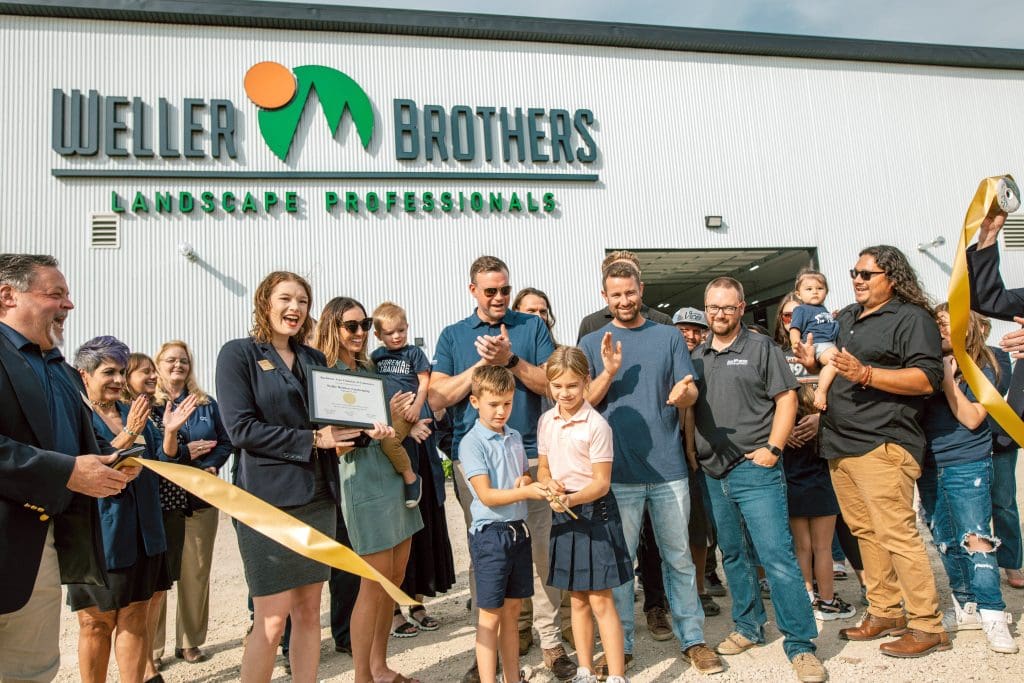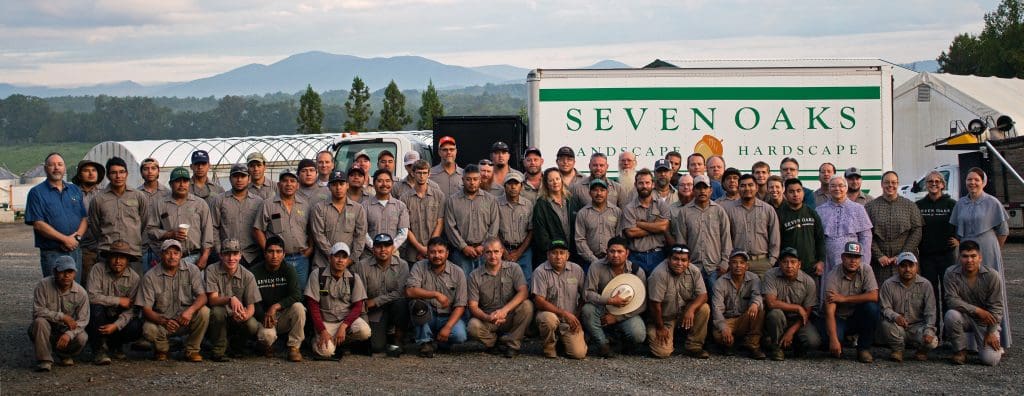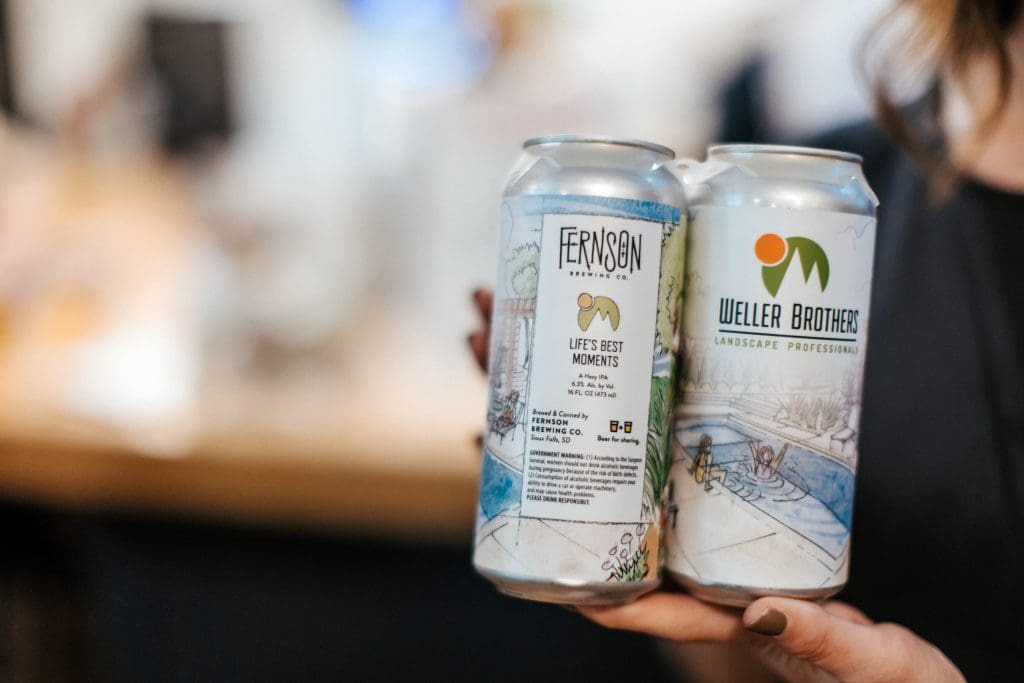
Everyone has a story. Your company’s story and how you decide to communicate it can help attract loyal customers and new employees. Especially in the lawn and landscape industry, where there is a lot of competition, your story can help differentiate you from others in your market.
You might think you have a story that isn’t unique, but each company starts with a dream and hope for what success will look like.
“It’s hard work to build a business, and you can’t succeed without a unique motivation to persevere,” says Scott Covelli, content director for EPIC Creative, a full-service advertising agency. “That motivation is a key part of your story, and your customers can relate to that! And when in doubt, tell your own personal story. You’re the only one who can truly sell you!”
Covelli suggests starting by asking questions like ‘Why are you in this industry?’ and ‘What gets you up in the morning?’ Finding the foundation of your passion for your work will drive your story.

For example, Weller Brothers Landscaping, based in Sioux Falls, South Dakota, got started when Cole and Brent Weller started mowing lawns as teens and just never stopped.
“That story of two young brothers with a pickup and a mower has evolved into a much larger one that includes dedicated employees whose families have grown alongside the business, customers who have become great friends, a second location, growing pains, successes, and a whole lot of fun,” says Jaden Miller, marketing manager for Weller Brothers. “Our company ‘purpose’ encompasses much of this developing story — creating outdoor spaces for life’s best moments.”
In the case of Yellowstone Landscape, headquartered in Bunnell, Florida, they never had a traditional founders’ story, but their goal has been to be a collection of the best and most innovative companies in the industry.
“We learned many years ago that customers didn’t really care that much about our story or our growth,” says Joseph Barnes, marketing director for Yellowstone Landscape. “They care about the role that we play in their story. They want to hear about how we can make them more successful. How we can solve their problems and help them achieve their goals. So, today, when a prospective client asks me to tell them about how Yellowstone came to be, I generally respond by telling them a story about how we helped a client solve a problem like the one they have, instead.”
Covelli agrees that your customer needs to connect with your story.
“The whole point of your story as a brand is to show your customers that you understand them,” Covelli says. “In a sense, it’s more important to be a part of a customer’s story, not have them be a part of yours. If you can relate to them, you’re already winning.”
What Makes a Company Story?
Seven Oaks Landscapes-Hardscapes, Inc., based in Glade Hill, Virginia, has been in business for over 30 years, but they just recently decided to focus on their story around five years ago.
“We realized was that when I worked shoulder to shoulder with our people for a period of time, they always got the story,” says David Bower, president of Seven Oaks. “But then, when I wasn’t around, they can’t get the same story from a manager as they did from the founder. I figured out real soon that we were not communicating what our story is, what our vision is, our mission, and the values that we’re going to live by. We realized we hadn’t developed it.”

Bower says to develop their company story, they had to look at where they had come from and where they wanted to go. He says their company story is captured in their vision, mission and values. He says they want to make memorable experiences and exceed everyone’s expectations.
Miller says they brought their entire company of just 100 people together to brainstorm on how to articulate their purpose last winter.
“After two long brainstorming sessions, Cole, Brent, and I gathered around several huge sheets of paper that we taped to the wall,” Miller says. “On these posters were the sentiments from our employees answering some of life’s biggest questions — what brings you joy? What brings our customers joy? What motivates you? What brings you a sense of fulfillment in your job?”
They threaded together the common elements to create their concise purpose statement, which has provided a sense of direction in making decisions, hiring the right people and their marketing efforts.
“Our employees: they create work that they are proud of, bringing a sense of fulfillment from a job well done, and the income and ability to enjoy life’s best moments with their friends and family, which most answered as their greatest source of joy,” Miller says. “Our customers: they are able to enjoy life’s best moments because of the work we do. That might be making memories in the backyard pool or having dinner together on the patio. Or, it might mean that dad never misses a soccer game after a long day of work because he doesn’t have to worry about mowing the lawn or tending to that broken sprinkler head.”
Miller advises developing a purpose statement that communicates your story without having to tell the whole story.
Barnes says because they don’t have the traditional founder story, they are able to focus on their strictly commercial client base and get to the point as quickly as possible.
“For many of them, the point is what we can do to solve their problem and make them more effective in their jobs,” Barnes says. “How can we make them look good? How do we make them the hero of their story?”
Barnes stresses that the customer should be the hero in the story and most companies spend way too much time talking about themselves.
“I don’t believe many clients out there are looking for someone to ride in on a white horse and save the day,” he says. “They want a guide. Someone to show them the path to success and help them along the way.”
Covelli says the keys to an effective brand story are authenticity and relatability.
“Most importantly, a brand should ‘live’ their story in how they talk and operate,” Covelli says. “In other words, they should walk the walk, and their story should be a representation of that.”
Enlisting Outside Help
Depending on your situation and in-house staff, a marketing firm can help you with telling your story more effectively.
When Bower realized the company didn’t need to be about him, he collaborated with a marketing firm and changed the name from Dave’s Landscaping to Seven Oaks Landscapes-Hardscapes. Bower says he got the new company name when he saw a billboard for a real estate company. The acorn became a symbol that fits with their vision, mission and core values.

“It’s all in the details,” says Allison Welch, marketing manager for Seven Oaks. “It’s the little things. A little acorn that grows to be the mighty oak.”
Miller says since she has an agency background, they didn’t need to work with a marketing firm, but they have benefited from their relationships with a local videographer and photographer. She says thanks to the videographer’s work, they can showcase their work and culture with professional videos.
“If a landscaping company is working with an agency or firm, I’d encourage them to choose one that will really take the time to understand your story and purpose,” Miller says. “There are many firms out there that will take on as many clients as they can and provide cookie-cutter services. Those ones will not succeed in communicating your story to the public. Find a team that really jives with your company and takes the time to understand who you are and what your purpose is.”
What Resonates with Clients and New Hires
In Yellowstone’s story, Barnes says their rapid growth and openness to new ideas are elements of their story that are attractive to outsiders.
“We pride ourselves on the fact that we don’t have all the answers, and if someone comes up with a great idea or a way to make us better in a local branch, we can take that one great idea and spread it across all our branches really quickly,” Barnes says. “We’re always rewriting our playbooks because we know we can always get better.”
Barnes firmly believes clients and new employees are more interested in the role Yellowstone can play in their story, so they don’t spend a lot of time talking about themselves.

“What led them to contact us about working with them, or what led them to want to apply with us?” Barnes says. “Once we find out what they want, we can tell them how we think we can best fit into their story.”
Miller says their employees’ stories are what their audience responds to the most as they share their employees’ success and growth as part of life’s best moments.
“These collective stories that create the framework of our team resonate with others because – I think – we can all see ourselves and our common humanity in these types of stories,” Miller says.
Bower says their story attracts new hires more often than new clients. Welch says their story clearly communicates that their company culture treats people with dignity and respect.
“More and more with Millennials and Gen Z, people want to be a part of something bigger than themselves that they can believe in,” Covelli says. “Show prospective employees how they can own their part of your story, and they’ll be much more willing to latch on.”
Communicating Your Story
Once you’ve fine-tuned your story to something that resonates with customers and potential employees, there are numerous methods to getting it out there.
Seven Oaks uses a quarterly newsletter to communicate their company story. They’ve been producing it for about five years. A printed copy is mailed to around 3,000 clients. The newsletter features a letter from the president, some practical tips like chores to do in the fall, as well as news about their employees.
“When you’re inviting somebody onto your property as a steward of your home, and we work for clients that this might not be their primary residence; there’s a trust level that needs to be there,” Welch says. “A comfort level with the people that you’re inviting on your home and your property, so I think they do enjoy that aspect of the newsletter.”
Bower says they have learned people are looking for authentic information, rather than being marketed to.
“We believe that our marketing needs to be a reflection of our belief that we don’t need to be telling people how great we are,” Bower says. “We just need to illuminate their path. We’re just sharing our lives with them and hopefully, they’ll share theirs with us and I think they like the authenticity,” Bower says. “They like the integrity and the trust level that we build in our relationships.”
Miller says she likes to think outside the box and notice what catches her eye in the real world. This is what led them to create a custom Weller Brothers beer this past summer.

“There are a handful of good landscaping companies in Sioux Falls, South Dakota,” Miller says. “How many of them have a great beer with a fun label (created by a designer on our team) that’s on tap downtown at the most popular brewery (and is donating $1 from each pint to a local nonprofit)? Just one.”
She says she doesn’t expect results overnight, but having a custom beer, as well as sharing the other great things they’re doing, can help drive people to choose them.
Weller Brothers has also been using videos to tell the stories of their landscaping projects for about five years. Miller says when she came on she saw an opportunity to do something more creative. In one instance, they had a project where one of their employees who had no family in the area had practically become part of the client’s family.
“There were plenty of sweet tears and emotions, while friends and family played in the pool and enjoyed the outdoor kitchen beyond,” Miller says. “This was the perfect way to show what we do in the background, with the why of what we do in the foreground. It’s certainly a life’s best moment type of story.”
Bower argues that every interaction you have with a client, you are making a memorable experience. They are the ones who will tell your story for you.
“Stories are fun and people are interesting and we are in an enjoyable industry,” Miller says. “Try new things. Sometimes an idea might flop and sometimes it might be perfect – but, after all, the failures and successes are all part of a good story!
This article was published in the Jan/Feb issue of the magazine. To read more stories from The Edge magazine, click here to subscribe to the digital edition.

